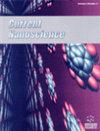The Convergence of Graphene Quantum Dots and Peptides: Novel Strategy for Cellular Targeting in Cancer
IF 1.5
4区 材料科学
Q4 BIOTECHNOLOGY & APPLIED MICROBIOLOGY
引用次数: 0
Abstract
In recent years, the convergence of two distinct nanomaterials, graphene quantum dots (GQDs) and peptides, has ushered in a new era of innovation in cancer therapeutics and biomedical research. GQDs, quasi-zero-dimensional graphene structures, have garnered significant attention due to their remarkable physicochemical properties, including excellent photoluminescence, high surface area, and biocompatibility [1]. Meanwhile, peptides, short amino acid sequences, have proven themselves as versatile molecular entities with a crucial role in cellular targeting, signaling, and communication. The convergence of these two domains, GQDs and peptides, has opened up exciting opportunities for developing novel nanocarriers and therapeutic platforms for the effective treatment of cancer [2]. The ligation of GQDs and peptides capitalizes on the unique properties of both components. GQDs exhibit exceptional optical properties, making them suitable for imaging and sensing applications [3]. Their high surface area allows for efficient drug loading, while their biocompatibility ensures minimal cytotoxicity. On the other hand, peptides offer molecular specificity, allowing for precise targeting of cancer cells and tissues. By combining these properties, GQD-peptide nanostructures can deliver therapeutic payloads to cancer sites with remarkable accuracy [4].石墨烯量子点与多肽的融合:癌症细胞靶向的新策略
近年来,石墨烯量子点(GQDs)和肽这两种不同纳米材料的融合开创了癌症治疗和生物医学研究创新的新纪元。石墨烯量子点(GQDs)是准零维石墨烯结构,因其卓越的物理化学特性,包括出色的光致发光、高比表面积和生物相容性,而备受关注[1]。与此同时,肽(短氨基酸序列)已被证明是多功能分子实体,在细胞靶向、信号传递和通信中发挥着至关重要的作用。GQDs 和肽这两个领域的融合为开发新型纳米载体和治疗平台以有效治疗癌症带来了令人兴奋的机遇[2]。GQDs 和肽的连接利用了这两种成分的独特性质。GQDs 具有优异的光学特性,适合成像和传感应用 [3]。GQDs 的高比表面积可实现高效的药物负载,而其生物相容性则可确保将细胞毒性降至最低。另一方面,肽具有分子特异性,可精确靶向癌细胞和组织。结合这些特性,GQD-肽纳米结构可将治疗载荷准确地输送到癌症部位[4]。
本文章由计算机程序翻译,如有差异,请以英文原文为准。
求助全文
约1分钟内获得全文
求助全文
来源期刊

Current Nanoscience
工程技术-材料科学:综合
CiteScore
3.50
自引率
6.70%
发文量
83
审稿时长
4.4 months
期刊介绍:
Current Nanoscience publishes (a) Authoritative/Mini Reviews, and (b) Original Research and Highlights written by experts covering the most recent advances in nanoscience and nanotechnology. All aspects of the field are represented including nano-structures, nano-bubbles, nano-droplets and nanofluids. Applications of nanoscience in physics, material science, chemistry, synthesis, environmental science, electronics, biomedical nanotechnology, biomedical engineering, biotechnology, medicine and pharmaceuticals are also covered. The journal is essential to all researches involved in nanoscience and its applied and fundamental areas of science, chemistry, physics, material science, engineering and medicine.
Current Nanoscience also welcomes submissions on the following topics of Nanoscience and Nanotechnology:
Nanoelectronics and photonics
Advanced Nanomaterials
Nanofabrication and measurement
Nanobiotechnology and nanomedicine
Nanotechnology for energy
Sensors and actuator
Computational nanoscience and technology.
 求助内容:
求助内容: 应助结果提醒方式:
应助结果提醒方式:


